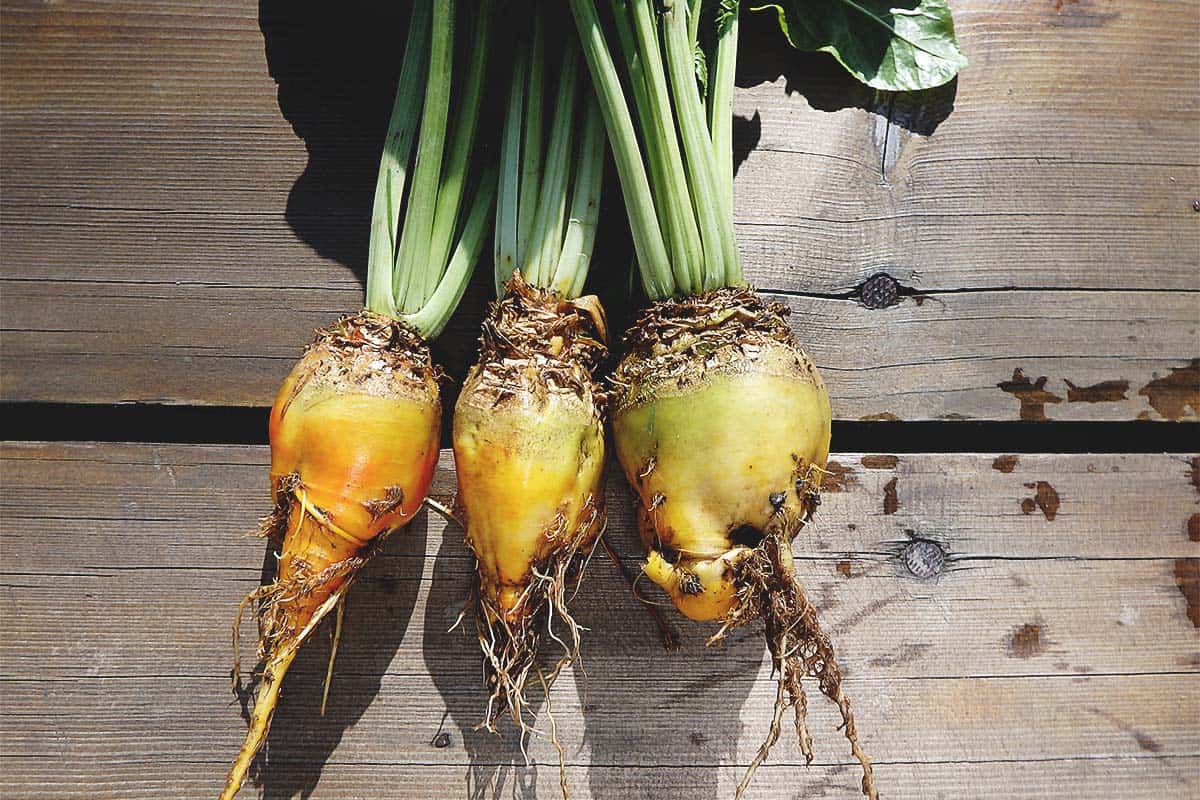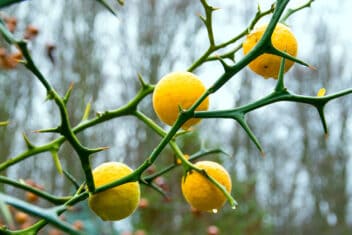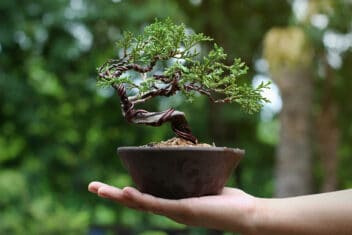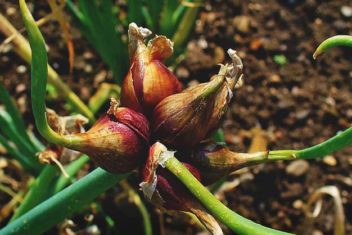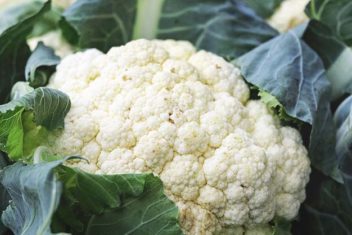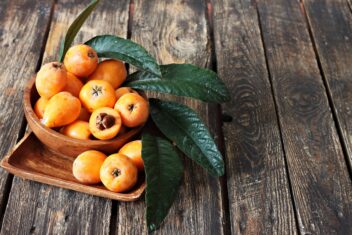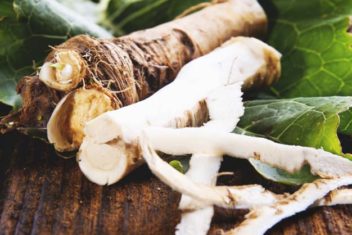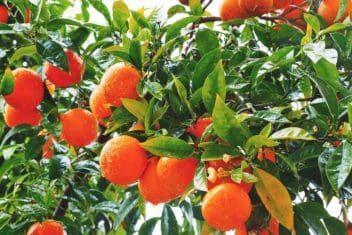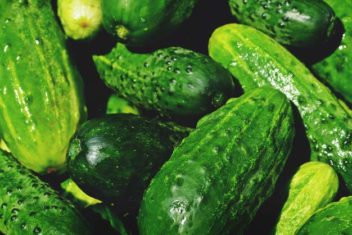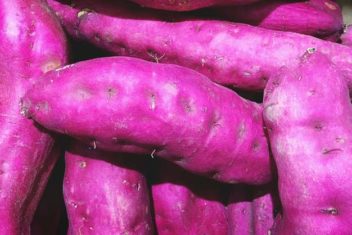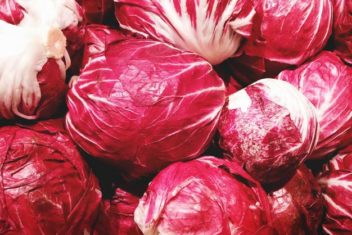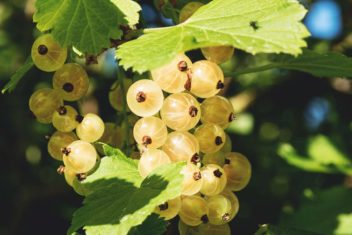I admit I had never tried growing mangold until I was asked to plant some as a test. Once I dug up my first harvest, the flavor was a revelation and I was a convert.
They’re also known as mangel-wurzel, field beet, or fodder beet, and are related to sugar beet and red beet, hence the flavor similarity.
Mangold isn’t a well-known root vegetable, but it deserves some recognition. It’s tasty and versatile, and if you decide to give it a go, you won’t be disappointed.
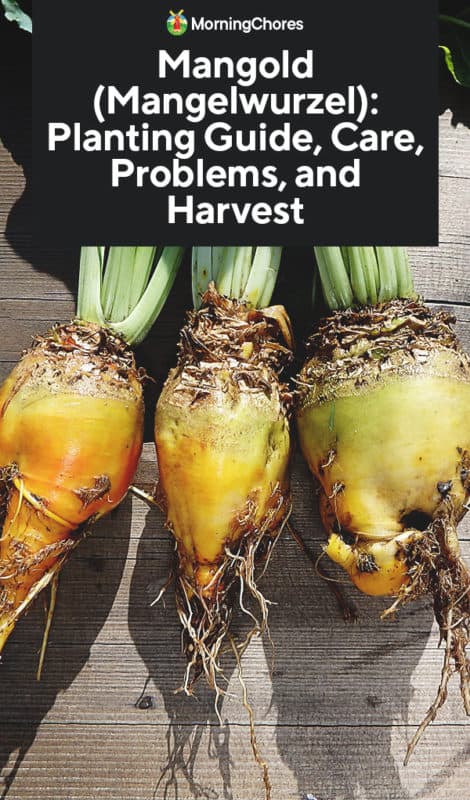
Planting Mangold
Growing Zones
Mangold do well in zones 2 to 10. This is the same as beets, so mangold can effectively be considered a beet in terms of growth.
Mangold grows best in cooler areas. They don’t like tropical temps and tend to rot in high humidity or wet soil.
Sun Requirements
Plant in full sun in areas where the temps aren’t excessively hot in the peak of the day. Plant in partial shade if you live in a hot area to avoid the mangold becoming stressed.
If, like me, you have intense sun in the summer, use a shade cloth.
Soil Requirements
Loose, loamy or sandy soil is best to allow the root to form and grow. Use a lot of well-rotted compost made of rich organic matter and manure when planting.
The pH should be between 6 to 7. Remember, anywhere you are successful in growing beets is likely to be suitable for mangold.
When to Plant
In temperate zones, sow in spring when the last frost has passed. Soil temperature should be no less than 50°F and an average of 60 to 65°F during the day.
In subtropical zones, plant in late summer to early fall. Wait for those cool nights.
Spacing
Sow mangold seeds in rows 2 inches apart. Depth should be around 1/2 to 3/4 inches deep.
Once the mangold has pushed through the soil to about two to three inches, thin them out to a minimum of six inches apart.
This is important because in optimal conditions, mangold grows reasonably quickly and the roots can grow much bigger than beets.
I’ve also found that in the right conditions, mangold has a lot of leaves, so airflow is important to avoid diseases.
Caring for Mangold
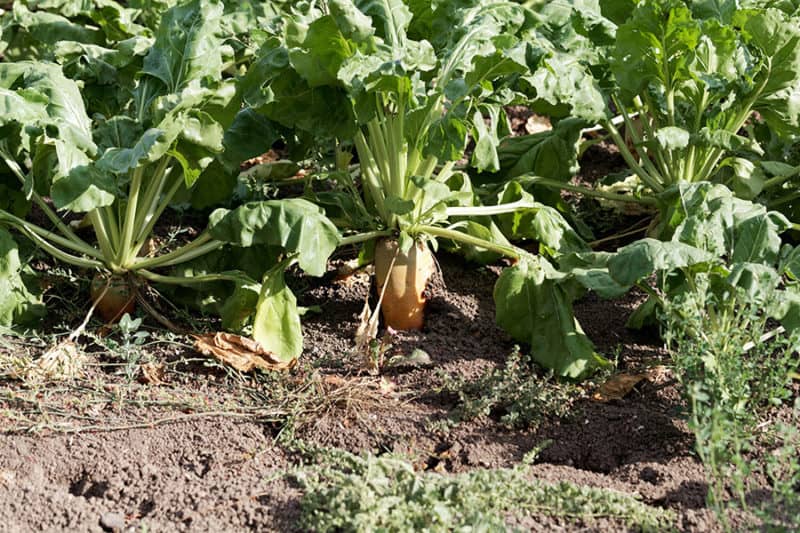
Fertilizer
If you ensure the soil contains well-rotted organic matter before planting, you may not need to fertilize during growth. Once the roots are approximately the size of my thumb, I use either a well-balanced fertilizer or well-rotted poultry manure.
Mangold leaves are sensitive to fertilizer burn – more so than most root plants. Make sure you avoid getting any fertilizer or manure on the leaves and be careful digging it in as the roots are tender at this young stage.
You could also spray the foliage each week with fish or seaweed-based spray. Just make sure they’re suitable for foliage.
Water
Mangold is a little fickle when it comes to water, but if you have consistent irrigation, you’ll be okay. Don’t allow the soil to become too dry or mangold will split when it takes up the water.
I get the best results when using drip irrigation. Once I tried drip irrigation, my mangold crop was abundant and healthy.
If you water manually, be sure to water a small amount often. An inch a week is ideal, depending on rainfall.
Mulch
It takes five months for your mangold to be ready, so the variations in the weather can be extreme. Mulch with straw or similar to a depth of about an inch to help keep things steady.
Common Problems and Solutions for Mangold
Mangolds suffer from many of the same pests and diseases as beets.
Potassium Deficiency
If you see the yellowing leaves, but the veins stay green, you likely have a potassium deficiency. Remedy with powder or liquid potash dug into the soil.
Downy Mildew
This fungus is common. It starts with yellow and brown spots on the leaves and gets worse. It stunts the growth and will eventually kill the plant if left untreated.
Our guide will help you tackle this issue, but most important is to ensure you leave plenty of room for air circulation around the plants.
Damping Off
This is where the seedling develops a black stem, wilts and dies. Check out our tips for dealing with it.
Aphids
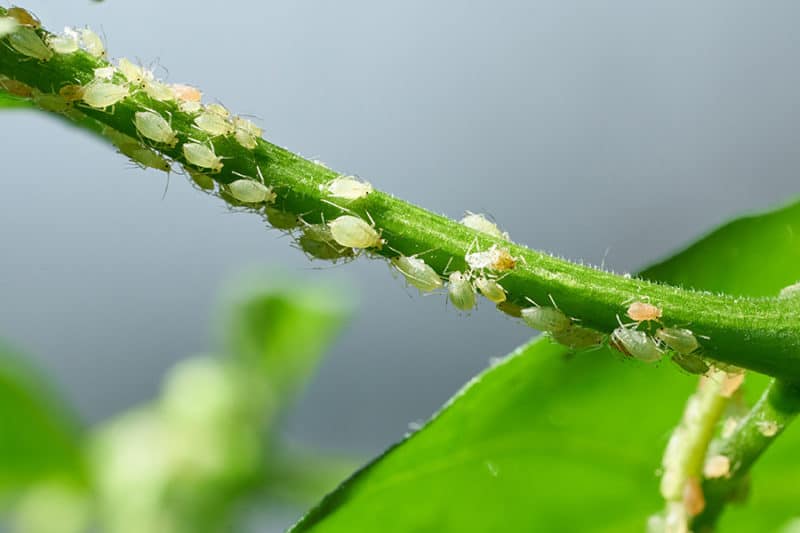
Aphids are sap-sucking insects that attack just about every plant out there. There are lots of ways to prevent and get rid of them.
Mangold Rust
Rust is caused by a fungus that attacks the seedlings of plants in the beet family. As plants grow, you’ll notice circular rust-like patches on the undersides of leaves.
It can be treated with a fungicide. Buy certified disease-free seeds.
Flea Beetles
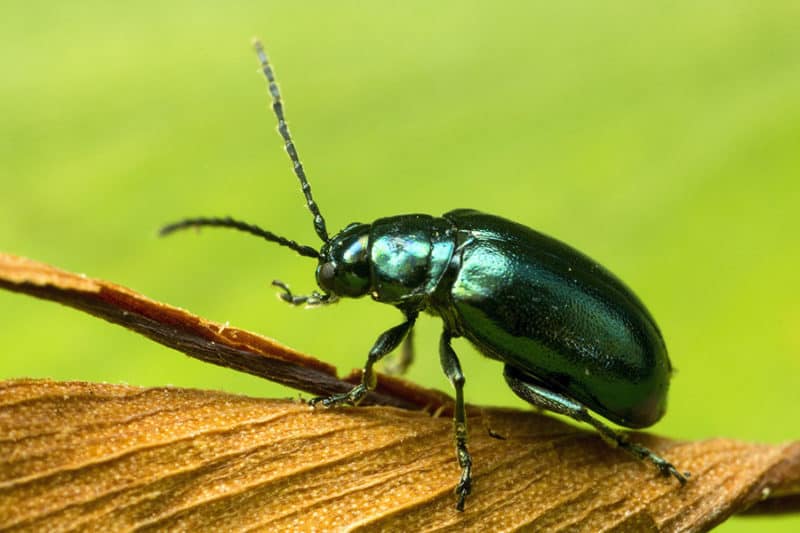
Flea beetles spread disease between healthy plants while eating the foliage, so they’re especially important to control.
Leaf Miner
Squiggly lines or blotches are telltale signs of leaf miners. You can pinch leaves to kill the larvae, or spray in the early spring with a targeted insecticide.
Companion Planting for Mangold
Plant mangold with:
- Chard
- Brussel Sprouts
- Kohlrabi
- Onions
- Cauliflower
- Broccoli
- Lettuce
- Potato
- Tomato
- Corn
- Eggplant
- Pepper
Don’t plant with pole beans, crocus, or mustard.
Harvesting Mangold
Mangold root is ready to harvest 4-5 months after planting. Don’t let mangold get too big or it can be woody. I let mangold grow a little bigger than beets.
Mangold is a versatile root. It can be shredded and used fresh in salads. You can also pickle, roast or boil and mash it like you do potatoes. You can even use it to make beer.
Mangold has a high sugar content, which makes it taste like an intensely sweet beet. As a result, it’s delicious in desserts.
You can also eat the leaves and stems raw or cooked.
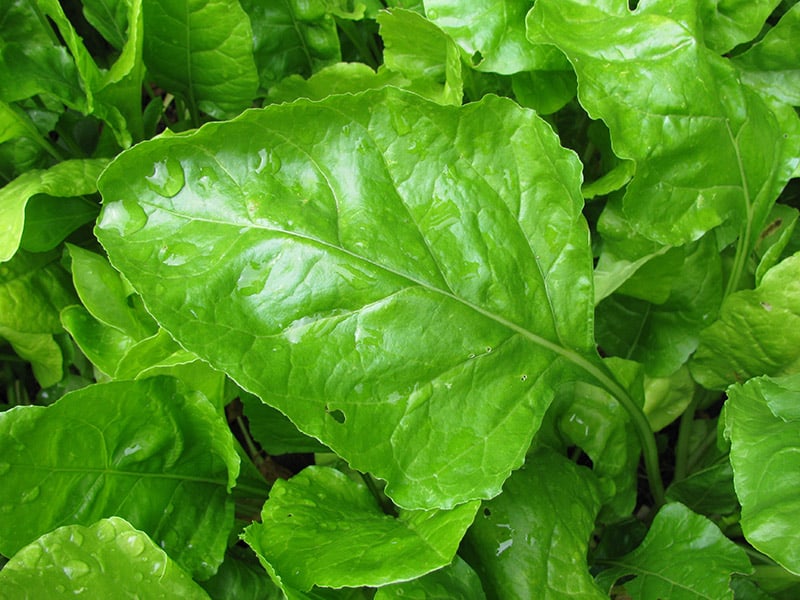
Seed Saving
Apart from the lovely flavor, saving the seeds is a fun part of growing mangold. The seeds are often hard to come by if you don’t have access to an heirloom seed seller, so saving some each year is smart.
Mangold is biennial that seeds in its second spring. Mangold is generous in its seed production so you can either gather a few seeds individually or snip the flower head off and hang it upside down. Let the seed and head dry.
When dry, the seeds should fall out, so place something underneath the hanging head. Give the head a little shake and collect the seeds.
If you store mangold seeds in a container in your fridge, preferably in the vegetable crisper, they can remain viable for up to three years.
Make Mangold Your Next Crop
If you think growing beets is fun, growing mangold is just as easy and even more rewarding because you end up with a versatile crop that will wow everyone at the kitchen table.
Make sure it’s not too hot, and there’s plenty of water and shade if necessary to make these plants happy.
If you have any of your own tips and tricks for preparing mangold, we’d love to hear from you.
